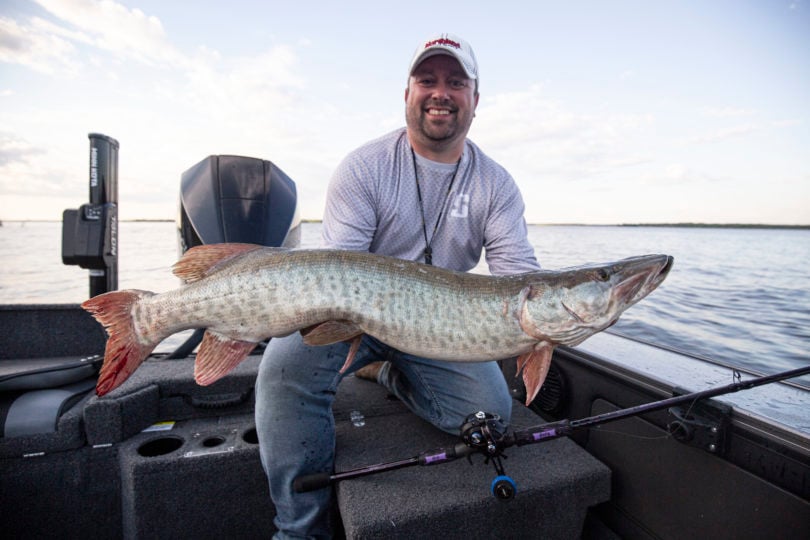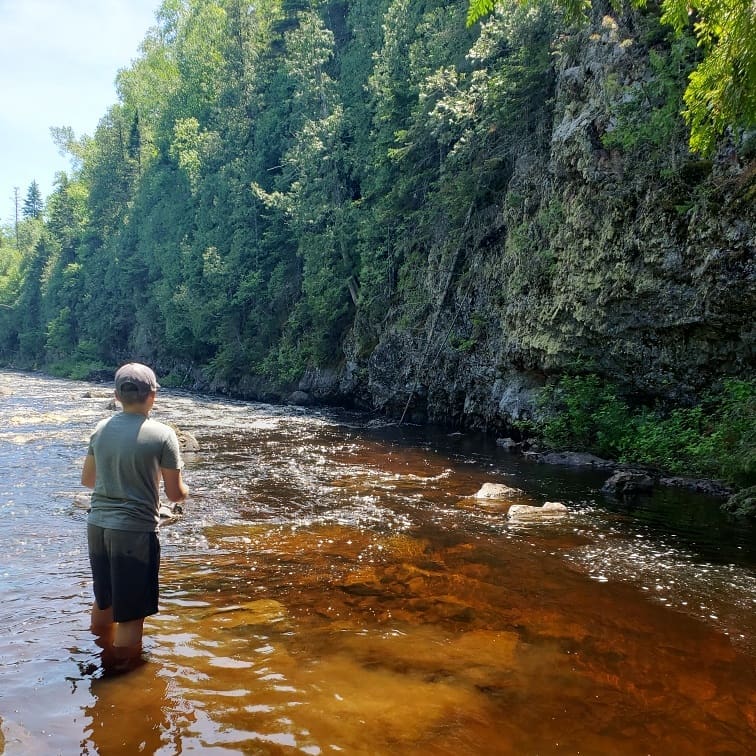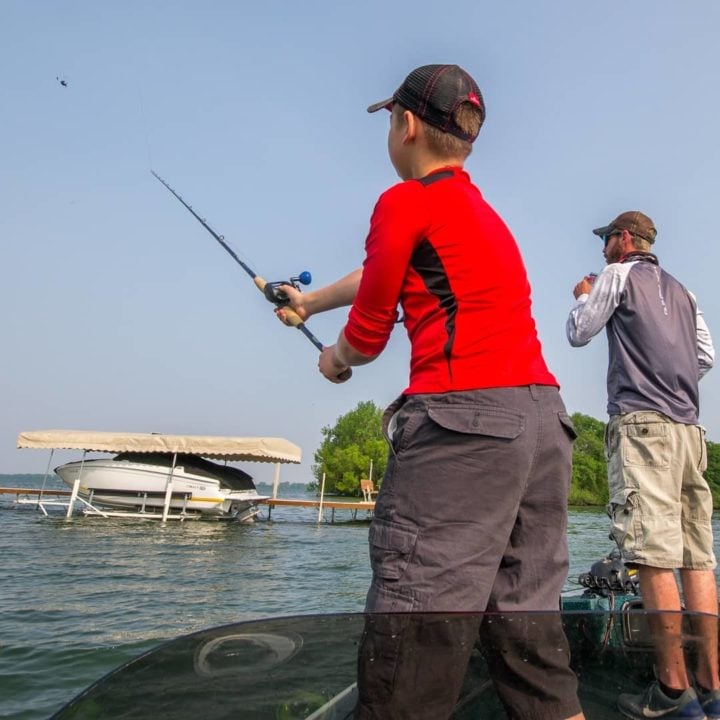
I grew up on some pretty meat and potatoes type fishing. Digging angle worms in the garden for creek chubs and such. I fished with what I had, and for what was available. As kids, we caught river shiners, and suckers, and once even snagged a freshwater lamprey. We even walked the water with a seine net, just to see what we were missing. It was something to do, and fun to see all the variety a small crick can offer, but eventually, we had seen what there was to see. We became pretty good at the game. We learned to fish ice-style teardrops, use less bait, and fish the grass edges and pools to reliably catch as many as we’d like. That included opposite ends of the spectrum like those minnows, but occasionally the brown trout that we’d rarely luck into. Inevitably, those big browns became the sole focus of our attention.
That scenario has played itself out in my own fishing experiences over the years, and I’m starting to see it play out with that my children. I’ll never tire of crappies and gills in the shallows, or the windswept walleye waters of the north, but there are certainly times when my level of fishing excitement is piqued by pure variety. The thought of doing something different, fishing new waters, and tackling a new challenging species brings back the joy of fishing originally felt all those years back. It’s a re-kindling of sorts, that brings back the jitters and anticipation from long ago. After going through a few of those cycles and species, from zero knowledge to a reasonable understanding of a new species’ habits and haunts, I can highlight some similarities that should help you tackle any new game. Whether you’re going from basic bobber fishing to stream trout out west, or ice-angling only to some saltwater flats fishing, here are a few things that helped me over the years.

Immersion
It’s one thing to study up a bit, cruise the internet for articles or posts, and generally hit the low-hanging fruit, but completely another to obsess yourself over the minutia that a dedicated angler for species X will go through. Dabble with the easy stuff, but I’ve found that to learn well, you should start with some more aggressive means of information gathering. Know of a bait shop or other local hang-out for your new target of interest? Find an excuse to spend time there and be a pest. Buy a few items at prolonged intervals, as much to soak in whatever you can learn as anything else. Inform yourself enough to ask educated questions, such that you could attend a seminar or reach out to a pro and get the most from that experience. Basic questions are broad and easily answered with some general research. Arm yourself with that rudimentary knowledge, hit the water a few times, and come back with some burning questions that only fully immersing yourself into the culture of that species would create.
Guide-Time
Eventually, you’ll hit a wall. Maybe not a hard plateau of learning per se, but a point where it would take years and multiple trips to make big strides forward. That’s the point where a good guide or two can make all the difference in the world. That point is hard for a lot of anglers to swallow, and no disrespect towards those who wish for a pure, do-it-yourself-only experience. I can definitely appreciate the quality in that, as truly, time on the water is the great equalizer. Still, bad habits are hard to break, and early on it’s easy to fall into ruts that make the diminishing time we all have, less productive. If your goal is to get good at any type of fishing or new species, you can pack years of personal learning into a day’s worth of properly placed questions and planning. Your goal should be learning above all else, not catching, which is where most people struggle in understanding the value.
It’s not cheap to hire a guide, especially if you look at it as only a single day of fishing. However, if you look at it as an investment over the life of your fishing, the price looks much different. That’s even more true if you’ll be fishing those same waters in the coming years. Factoring in all expenses, you can usually fish a handful of times yourself for the cost of a top guide’s day rate. The question should be, can you learn as much in that time period on your own as you would in hiring a fishing guide?
Rigging
The best anglers usually use the best gear, but that doesn’t mean you need to buy the most expensive stuff out there. Quality above all else allows you to recoup some of your investment within a reasonable amount of time should the interest fade, but if you go bargain-minded only, you often lose that chance. There are items in my garage still that bear proof of that, but also many more that only had a temporary home there. Pay careful attention to what your guide(s) use in every aspect of the game. In everything from terminal tackle, rods, reels, and line – even down to the pliers and specialty accessories – chances are that if it’s in their boat, that item has earned its place. Rigging properly for any new species is truly an attribute of any good angler, so spend some time making sure you have what you need.
Application
The next step is probably the most difficult, though it’s also the most rewarding. It requires you to get out there and practice what you’ve learned. It’s easy to be on fish when with an expert, and much different when you’re out there on your own. You’ll struggle, and deservedly so. You didn’t think you’d be able to learn decades of data from blind interest and a guide trip did you? Arming yourself with the knowledge is just the first step, but it’s important now to immediately get out there and put into perspective what you’ve picked up. Some things may not suit your style of fishing or interest level, and that’s where you get to ad-lib.

On a recent guided muskie trip, my son Isaac had a follow on his 5th cast, saw 4 more fish, and hooked up with another that was lost boat side. I’ve fished them several times before with mixed success, typically favoring walleyes and whatever else was available to beat the water to a bubbly froth. At this point, however, I’m committed to getting better at it, mostly for him but also for the excitement and pursuit of something new. So as he learned how to figure 8, I was studying boat control, cues, and casting distances. While he practiced different retrieves for new lures, I focused on map study, the pattern, and why certain spots held fish during that time of year. Our questions were variable, and highly annoying I’m sure, but we came away with a much greater understanding of the game.
Now, it’s up to us to put that knowledge to work – only to re-learn some key mistakes, revise our efforts where they make sense, and tackle new questions as they arise. That’s what makes fishing a true joy, even when successes are rare. You learn from your losses and thereby, earn your wins.
By Joel Nelson

